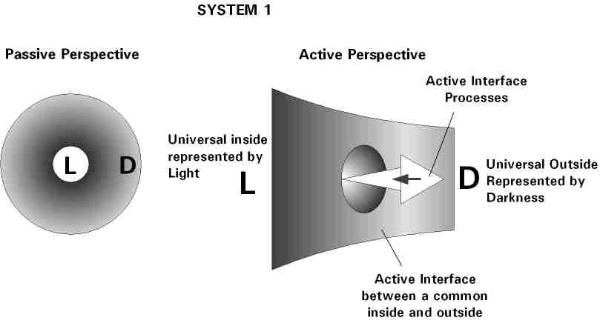

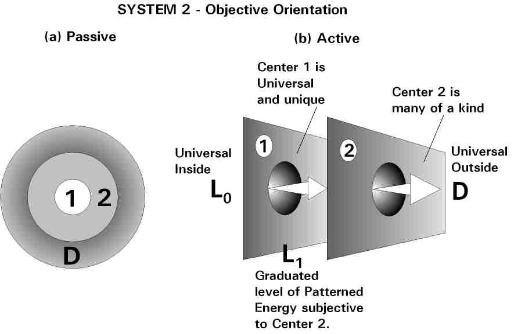
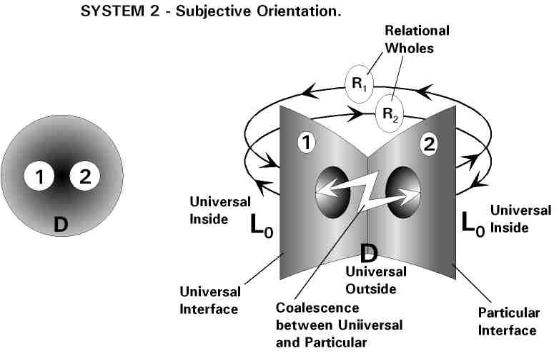
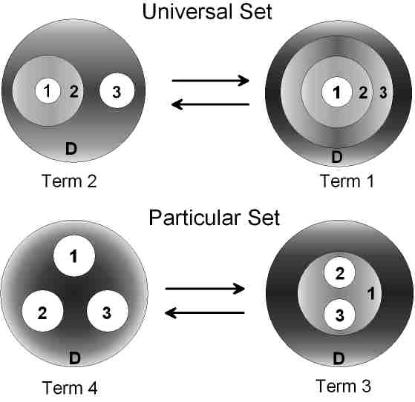
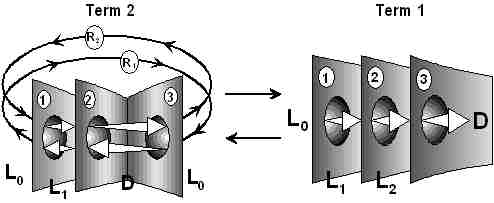 |
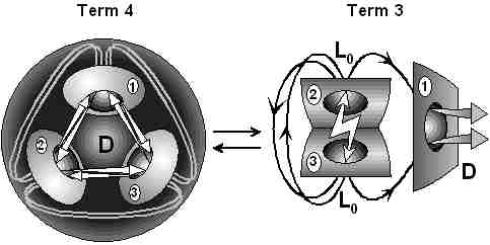 |
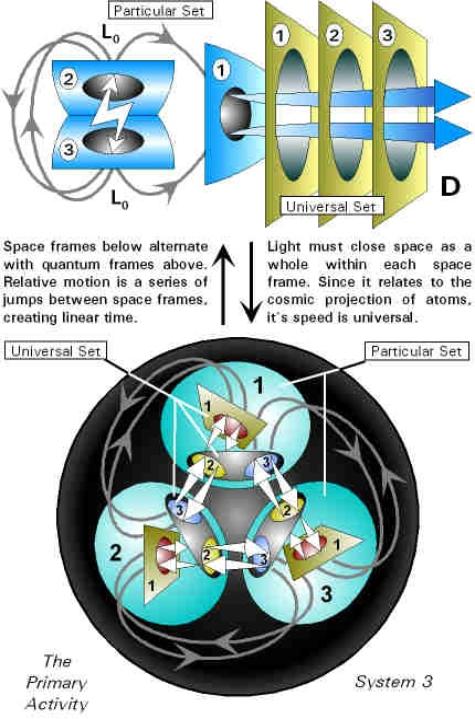

| Step | Set 1 | Set 2 | Set 3 | Set U1 | Set U2 | Cycle |
|---|---|---|---|---|---|---|
| 1 | T8E | T7R | T4E | T9 | T3 | #1 |
| 2 | T5E | T1R | T2E | T9 | T6 | |
| 3 | T7E | T4R | T8E | T8R | T6 | |
| 4 | T1E | T2R | T5R | T8R | T2E | |
| 5 | T4E | T8E | T7R | T9 | T3 | #2 |
| 6 | T2E | T5E | T1R | T9 | T6 | |
| 7 | T8E | T7E | T4R | T8R | T6 | |
| 8 | T5R | T1E | T2R | T8R | T2E | |
| 9 | T7R | T4E | T8E | T9 | T3 | #3 |
| 10 | T1R | T2E | T5E | T9 | T6 | |
| 11 | T4R | T8E | T7E | T8R | T6 | |
| 12 | T2R | T5R | T1E | T8R | T2E |
 |
Term 1 - Perception of the Field (Particular): The separate centers coalesce in pairs, idea C1 with knowledge C2, and routine C3 with form C4.(5) Perceived need thus relates to resource capacity to respond. Term 2 - Creation of Idea (Particular): C1, C2 and C3 form double identities as a known potential to enact idea in routine. Form C4 is fed back from the environment through routine C3 to find identity as a superimposed idea on the closed triadic relationship between C1, C2 and C3. Term 3 - Transference of Idea (Universal-Secondary): C2 and C3 are coalesced. Knowledge (2) contains idea (1). Routine (3) contains form (4). Idea (1) is thus transferred to form (4) through the coalescence of knowledge and routine. Term 4 - Mental Work (Particular): C1 and C2 coalesce within C3 separate from C4. Thus Idea and knowledge together relate through routine with external form. Alternating countercurrent identities with either idea or knowledge are superimposed, thus sensory input alternates with proprioceptive simulated feedback. Term 5 - Physical Work (Particular): Idea C1 directs knowledge C2 from within, which in turn directs routine C3, which finds a physical identity in form C4. A countercurrent propriocption feeds back from form (4), via C3 and C2 to idea (1). Term 6 - Corporeal Body (Universal-Secondary): Idea C1, knowledge C2, & routine C3 find mutual double identities within the context of common form C4. Each triad member also projects independently through form, C4, lending it specific bounds. Term 7 - Memory Resources (Particular): Routine C3 is coalesced with form C4 as a quantized element of technique within knowledge C2, and idea C1. T7 eternally reconciles inside and outside as a timeless element of memory. Term 8 - Creative Feedback (Particular): Countercurrent identities balance form C4 with idea C1 through routine C3, all within the context of knowledge C2. An output responds to balance input, and vice versa, along with resource renewal. Term 9 - Renewed Perception of the Field (Universal-Primary): Idea C1 gives direction to knowledge C2 which gives direction to routine C3 which gives direction to form C4. This is the universal discretionary hierarchy of System 4. |
